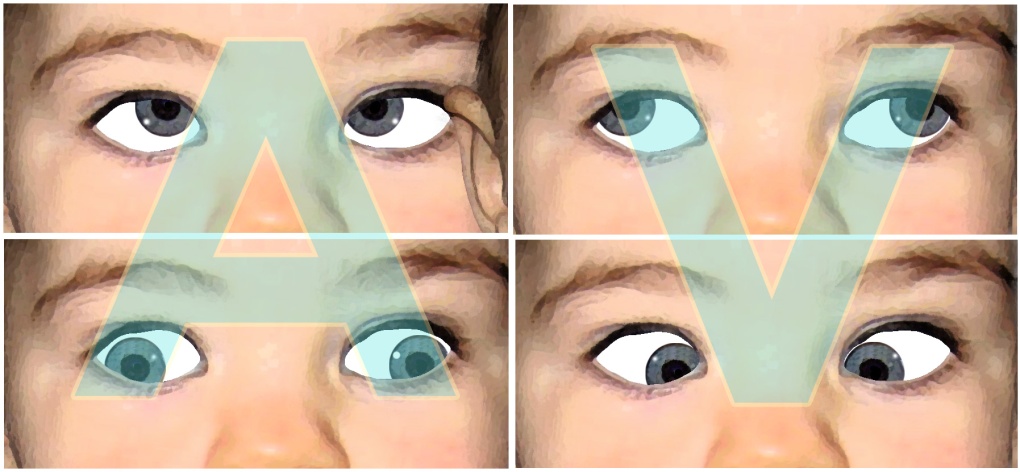The V phenomenon is mainly seen in the bilateral hyperfunction of the lower oblique muscles, while the phenomenon A in the hyperfunction of the bilateral upper oblique muscles.
As consistent, characterize all types of strabismus, in which the angle of deviation remains constant in all gaze positions. But there are forms of strabismus, in which the deviation angle varies depending on the direction the child turns his gaze to. These are called non-coherent.
Most horizontal strabismus (esotropia, exotropia) are consistent. The change of deviation angle mainly describes the vertical strabismus.
If the angle of strabismus is greater when the child is looking up, and diminishes when looking down, the pupils of the eyes follow a path that forms the letter «V». Conversely, if the angle of strabismus is smaller when the child is looking up, and increases when looking down, the pupils follow a path that resembles to the Greek letter "Λ". But in international terminology, where the "Λ" is missing, it has come to be characterized by the letter 'A'.

The V phenomenon is mainly seen in the bilateral hyperfunction of the lower oblique muscles, while the phenomenon A in the hyperfunction of the
bilateral upper oblique muscles.
The correction of the A and V phenomena is surgery and it is good to combine it with surgery for treatment of the horizontal strabismus (of esotropia or exotropia).
 German
German Ελληνικά
Ελληνικά